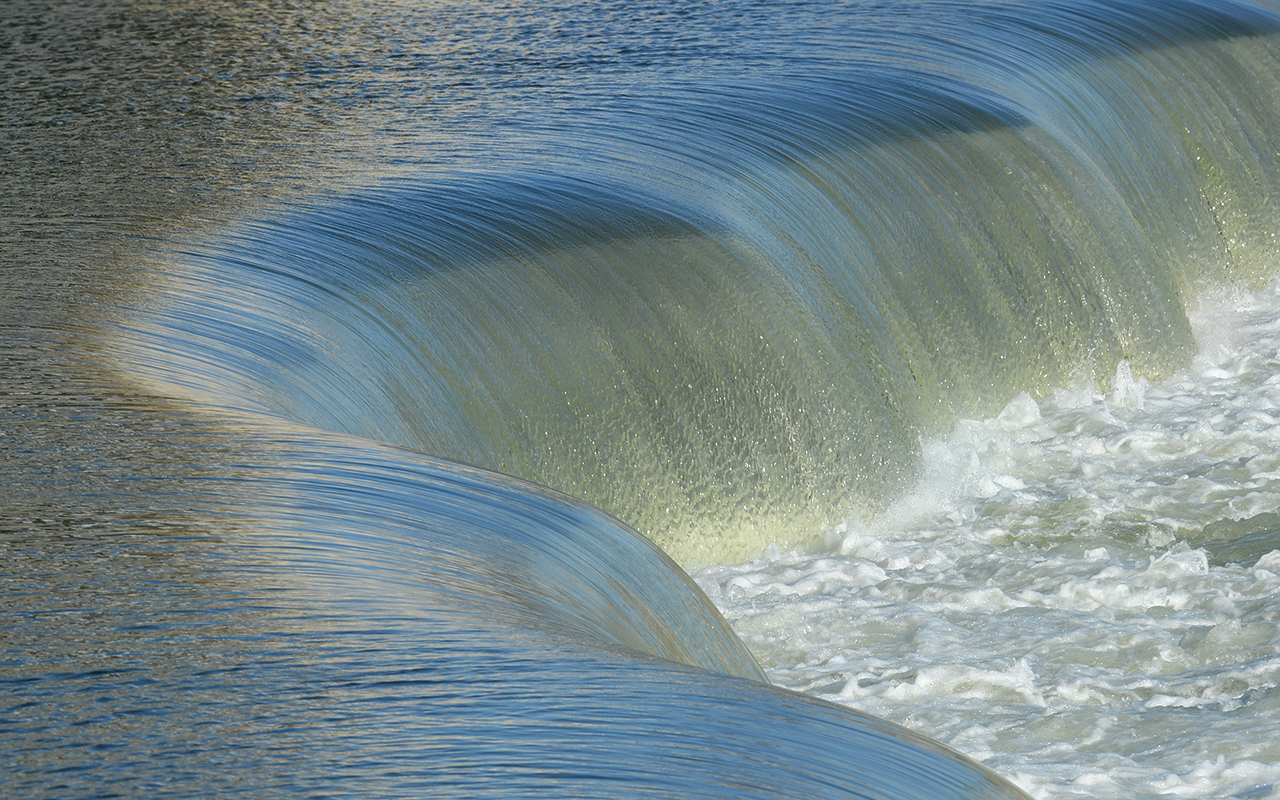Above: The rushing waters of the Des Moines River roll over the low-head dam at Scott Street, one of two dams that may be replaced by recreational water features. The change would dramatically reduce danger and revitalize use of the river by outdoor enthusiasts. Ironically, enjoyment of the river was one of the reasons for the creation of such dams. Photographer: Duane Tinkey.
For safety and recreational reasons, downtown Des Moines’ long-standing dams at Center Street and Scott Avenue may be removed in coming years.
Similar “low-head” dams are common throughout Iowa—some created to enhance the beauty of waterways, others to generate electrical power through turbines. But all have earned a reputation as “drowning machines.”
The Center Street dam, described in historic records as the Williams dam, was built in 1917 to replace wooden versions that had been there since the 1850s. Our century-old dam was developed with hydroelectric turbines on the west bank, generating power for Des Moines Electric Light and Power.
A boat landing just above the dam served paddlers and paddle-wheel excursion boats that trafficked in the pool upstream, an area then known as Lake Tac Hussey (named for a prominent river advocate—a poet, historian and founder of the Des Moines Canoe Club in 1895).
As delightfully bucolic as all that is, there remains the “death machine” aspect. Twelve people have died in the churning waters beneath the dam. That’s why the state has dedicated funds in recent years to mitigate the risks of these structures by removing or modifying them.
Downstream, the Scott Avenue dam remains a popular site among anglers. Its purpose was beautification of the riverfront, says Teva Dawson, senior planner with the Des Moines Area Metropolitan Planning Organization, which has a keen interest in the city’s rivers.
“Beauty dams create that placid pool that people have enjoyed for so long,” Dawson explains. In addition to appearances, a public swimming beach below Grand Avenue once served local residents enjoying the pool created by the Scott Avenue dam.
Today, there’s new enthusiasm for people engaging with the river. Kayakers and others are eager to enjoy whitewater rapids downtown. Instead of flowing over dams, the river would rush around boulders and other features to create a paddler’s playground. These obstructions would preserve the upstream pool for boat traffic while ending the deadly hazard of dams.











